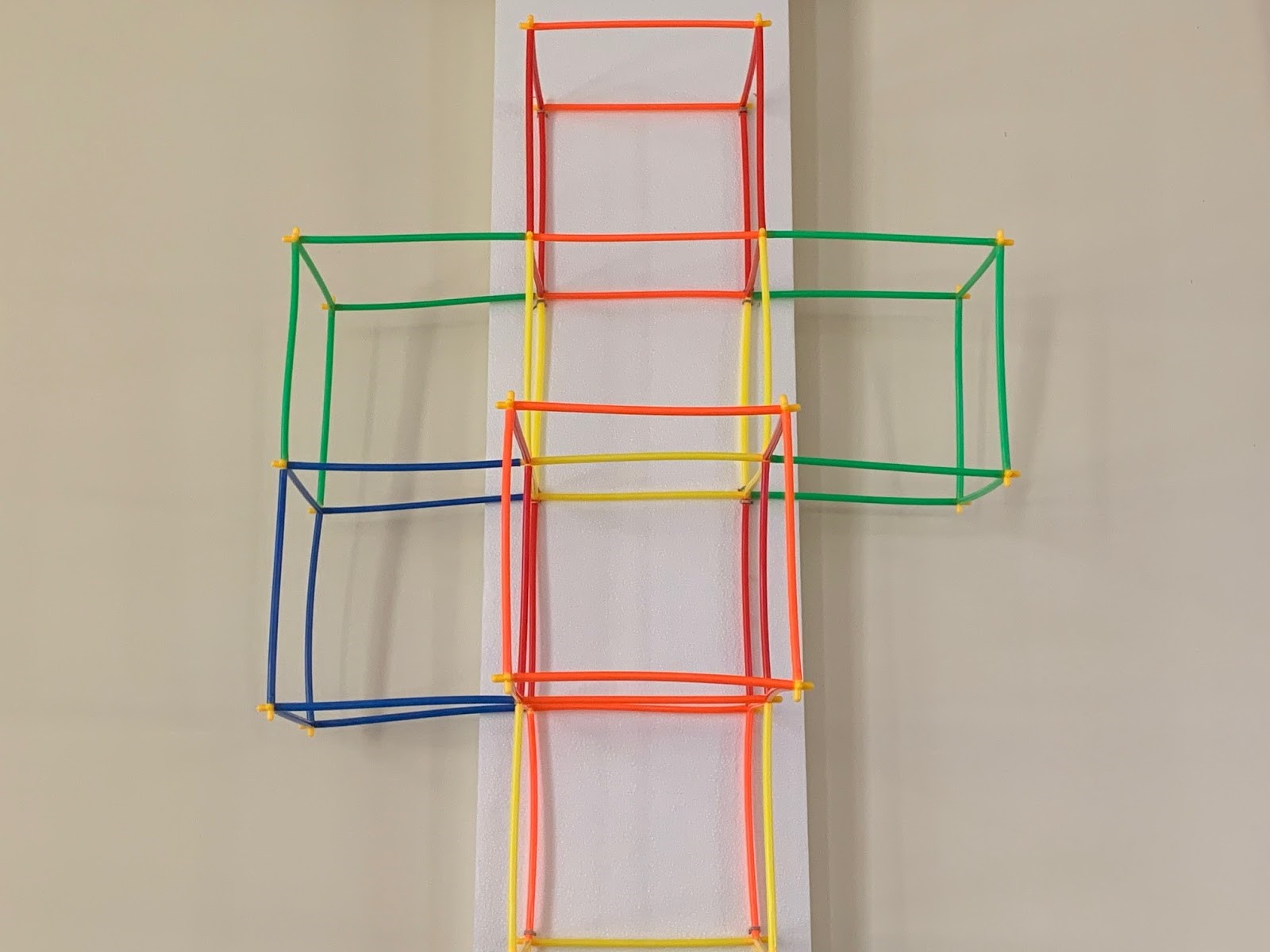Connected While Apart
Where We Began

Dear Mayfield,
About this time a year ago the last of our children were returning to school for another year of learning and we were approaching a very contentious election cycle. I made the decision then that theologically we would ground the new church year beginning on the first Sunday in Advent, December 1, 2019 in the theme of hope. It seemed the year ahead would be a difficult one, little did I know how great that difficulty would become. The intent was to tie the year together with this quote from Barbara Kingslover: “The very least you can do in your life is figure out what you hope for. And the most you can do is live inside that hope. Not admire it from a distance but live right in it, under its roof.” In response to that quote, behind the pulpit, Roger, with Becky’s assistance, began composing this ever-growing, ever-changing dwelling for hope pictured above, adding more and more pieces over time. His depiction of that dwelling had assumed this size and this shape six months ago on March 8, 2020, the last Sunday when we were in person with one another in the Mayfield sanctuary.
If it seemed a year ago that hope might be critical to what would sustain us in 2020, that possibility seems even more urgent now. During Advent 2019, we spoke together words like these: We must accept finite disappointment, but we must never lose infinite hope. (Martin Luther King, Jr.) Hope is a stretching of the ligaments, a limber reach for something greater. (Maria Popova) When we had our first breakfast church experience on December 15, 2019, I turned to the wise work of Kate Davies in her book Intrinsic Hope. She distinguishes between what she identifies as intrinsic hope and extrinsic hope or conventional hope. Extrinsic hope is wrapped around the expectation that in life we will receive what we desire as we hope. By contrast: “…intrinsic hope is a deep abiding trust in whatever happens and in the human capacity to respond to it positively. It accepts life just as it is and works with it, whether or not it’s what we want…” Intrinsic hope is a tall order right now. Davies recognized in her 2018 book that we must attend to intrinsic hope continually since it is always vulnerable to erosion. In her forward to Davies book, Vicki Robin reminds us that in Spanish the same word means hope and wait. So hope for her is more about expectancy than expectation. And it requires an emptiness, a not knowing, and a turning away from fear. What a good time to remember the most repeated biblical verse, 366 times, “Do not fear.”or “Be not afraid.”
In the growing challenges of a deep political divide, of Covid-19, of broader and wider economic losses, of racial pain tearing at the fiber of who we are and who we thought we were, of questions about how to best and safely educate our children and young people, and of layers of separations from people and activities that we love, I gently pose a few questions from the posture of intrinsic hope. These are not questions to quickly answer but rather ones we can carry around to consider and lean on.
- With expectancy rather than specific expectations, can you figure out, describe, and imagine living in the hope that is yours right now?
- How does your hope survive disappointment?
- What would it look like to stretch your body into a symbol of your hope? This can be a real stretch or an imagined stretch.
- Why is it important for you to keep alive a trust in the human capacity to respond positively and justly no matter what?
- Roger offered us one illustration of a dwelling for hope. What would yours look like?
With peace while working on hope, Martha

